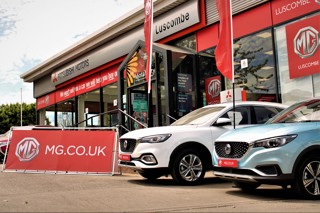It’s a fantastic time to be in the automotive industry. Consumer confidence is at an all-time high and global sales are soaring.
Research from McKinsey & Company points out that global motor vehicle sales have increased by nearly 3.6% over the past five years thanks to a growing middle class in emerging economies, such as China, contributing to rising demand.
This greater spending power is buoyed by competitive vehicle finance deals and a quality selection of cars to suit almost any budget.
However, the industry’s success in hitting impressive sales targets doesn’t rest entirely on the macro economy: salespeople themselves play an important part in making the numbers.
Sales methodology has undergone a dramatic shift in recent years, moving from predominantly traditional ‘field’ or outside sales to so-called ‘inside’ sales.
Driven by intelligent technology, inside sales allows the salesperson to manage the A to Z of a sale by accessing customer data digitally and sealing the deal remotely rather than in-person.
According to Forbes, inside sales is quite simply, sales. Only in today’s world we now have the virtual tools to do it differently.
Many of the larger players in the automotive industry have already adopted inside sales tactics to help drive performance, but its potential can be realised for smaller companies too.
The overall benefits for the automotive industry are clear: increased efficiency and a better customer conversion rate.
The inside sales methodology enables salespeople within the automotive industry to respond faster to queries and deliver relevant and well-researched information, which in turn helps increase customer satisfaction and sales.
Technology underpins inside sales, and the adoption of relevant CRM and business intelligence (BI) software is vital to its success.
Accessing these ‘power tools’ can boost visibility at all levels of the automotive supply chain, identifying up-selling and cross-selling opportunities, as well as new consumer trends worth investigating.
Predictive analytics can forecast when your customers are likely to be in the market for new or repeat products, allowing you to build a sophisticated, proactive schedule for approaching your customers.
The right sales software support can also help your business navigate unwanted threats such as a sudden drop in sales. With important information at your fingertips, you can act quicker to resolve issues before they result in a loss of revenue.
This quick access to essential customer and prospect data is beneficial in more ways than one; you can track the historic interactions of each relationship and use this information to refine sales pitches, and draw on a ready database of contacts that allows you to pursue fresh leads faster.
Unlike traditional sales, inside sales uses a variety of platforms to communicate with your customers and prospects.
Platforms such as smartphones, email and even social media mean you don’t have to rely solely on face-to-face meetings, and can connect with more people near and far.
Plus, with the right tools, all the interactions can be recorded, tracked and stored automatically, ready for you to refer to as and when needed.
Driven by a highly competitive economy, the automotive industry as a whole is seeing how inside sales can satisfy customer demand, as well as ignite future growth - and smaller companies with fewer resources stand in direct line to benefit from it.
Not only do inside sales tools provide access to a larger customer target base (think global), they allow for a more intelligent customer retention programme. While there is a strong argument in favour of traditional sales, specifically in its ability to build better customer relationships through face-to-face engagement, a good CRM or BI system can give you more time, and better information, to focus on delivering that winning personal touch - and ultimately, convert leads into sales.
Author: Paul Black, chief executive of sales-i


















Login to comment
Comments
No comments have been made yet.